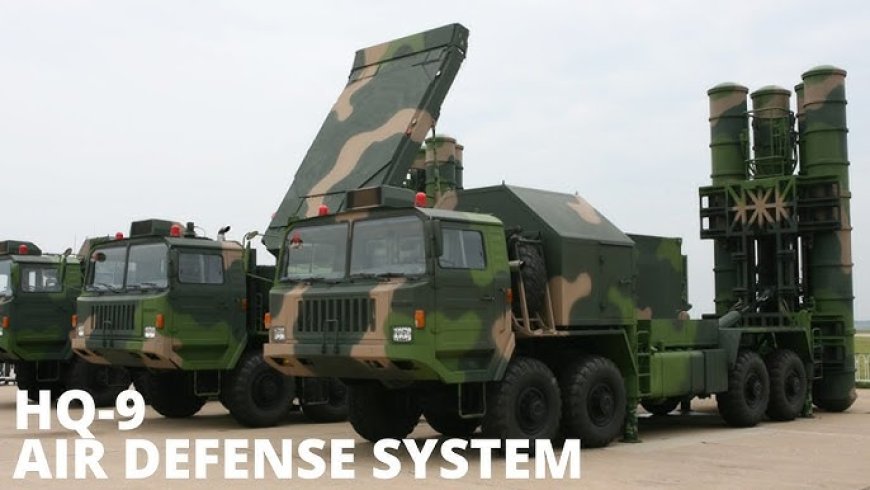HQ-9 Missile in Pakistan: Deployment, Capabilities, and Recent Developments

Introduction
The HQ-9 missile system, developed by China, has been a significant addition to Pakistan's air defense arsenal. Designed to counter aerial threats, the HQ-9's deployment in Pakistan reflects the country's strategic partnership with China and its efforts to bolster its defense capabilities. Recent events have brought the system into the spotlight, prompting discussions about its effectiveness and implications for regional security.
Overview of the HQ-9 Missile System
Development and Capabilities
The HQ-9 is a long-range surface-to-air missile (SAM) system developed by China, drawing inspiration from the Russian S-300 system. It is designed to intercept various aerial threats, including aircraft, cruise missiles, and unmanned aerial vehicles (UAVs).
Key Features:
-
Range: Approximately 125 to 200 kilometers, depending on the variant.
-
Altitude Coverage: Capable of engaging targets up to 50 kilometers in altitude.
-
Guidance System: Semi-active radar homing with anti-jamming capabilities.
-
Warhead: Equipped with a 180 kg high-explosive fragmentation warhead.
-
Radar System: Utilizes the HT-233 3D phased-array radar, capable of tracking up to 100 targets simultaneously and engaging 8 to 10 targets concurrently.
Deployment in Pakistan
Pakistan officially inducted the HQ-9/P variant into its military in October 2021, aiming to enhance its air defense capabilities. The system has been deployed in various strategic locations, including Lahore and Sialkot, to protect critical infrastructure and urban centers.
Recent Developments and Operational Challenges
Damage to HQ-9 Units
On May 8, 2025, reports emerged indicating that Pakistan's HQ-9 air defense units in Lahore and Sialkot suffered significant damage due to drone attacks. These attacks effectively compromised the operational status of the HQ-9 systems in these regions, raising concerns about the system's resilience to modern warfare tactics.
Performance During Operation Sindoor
During India's Operation Sindoor, the Indian Air Force employed SCALP cruise missiles, known for their stealth and terrain-hugging capabilities. These missiles reportedly bypassed Pakistan's HQ-9 and LY-80 (HQ-16) air defense systems without interception, highlighting potential vulnerabilities in Pakistan's air defense network.
Comparative Analysis: HQ-9 vs. India's S-400
India's acquisition of the Russian S-400 Triumf system has introduced a new dynamic in the regional air defense landscape. While both the HQ-9 and S-400 are designed to counter aerial threats, there are notable differences in their capabilities.
| Feature | HQ-9 (Pakistan) | S-400 (India) |
|---|---|---|
| Origin | China | Russia |
| Range | 125–200 km | Up to 400 km |
| Altitude Coverage | Up to 50 km | Up to 30 km |
| Target Engagement | 8–10 targets simultaneously | 36 targets simultaneously |
| Radar System | HT-233 3D phased-array radar | 91N6E Big Bird acquisition radar |
| Deployment Year | 2021 | 2021 |
The S-400's extended range and advanced radar capabilities provide India with a strategic advantage in aerial defense, potentially outmatching the HQ-9 in certain operational scenarios.
Strategic Implications
Regional Security Dynamics
The deployment and subsequent challenges faced by Pakistan's HQ-9 systems underscore the evolving nature of aerial threats and defense mechanisms in South Asia. The effectiveness of air defense systems is crucial in maintaining a strategic balance, especially given the historical tensions between India and Pakistan.
Technological Considerations
The reported inability of the HQ-9 systems to intercept modern cruise missiles like the SCALP raises questions about the need for continuous upgrades and adaptations in air defense technology. As aerial threats become more sophisticated, defense systems must evolve to address emerging challenges effectively.
Conclusion
Pakistan's integration of the HQ-9 missile system represents a significant step in enhancing its air defense capabilities. However, recent operational challenges highlight the importance of continuous evaluation and modernization of defense systems to address evolving threats. The dynamics between India's S-400 and Pakistan's HQ-9 systems will continue to influence the strategic landscape of the region, emphasizing the need for technological advancements and strategic foresight.





























